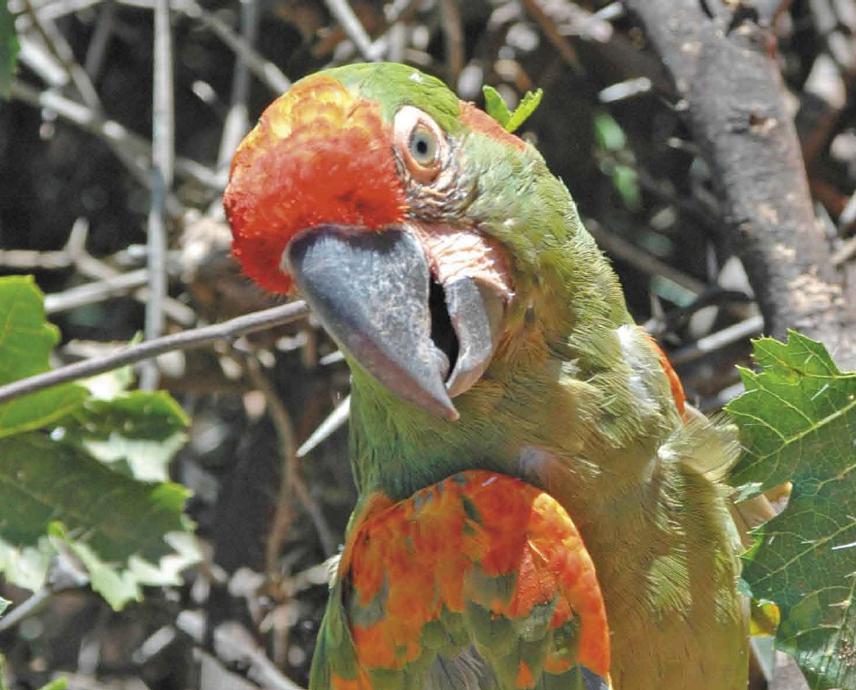Tricia Peterson
The project proposes to implement a portfolio of methods to work with local farmers, community groups, and youth to protect the bird and conserve its natural habitat.

Red-fronted macaw.
The Conservation of the Red-fronted Macaw in the Caine River project’s overall aim is to protect the Red-Fronted Macaw (Ara rubrogenys) in the ToroToro National Park and Caine River communities of Northern Potosí, Bolivia. The species, which the IUCN categorises as Endangered[1], has seen its population diminished in the area because:
(i) it is considered a pest by local peanut farmers and is therefore killed;
(ii) it is poached and sold in markets as pet due to its attractive colours. The project proposes to implement a portfolio of methods to work with local farmers, community groups, and youth to protect the bird and conserve its natural habitat.
Key activities include:
1) Scientific monitoring of the Red-fronted Macaw and its local habitat in order to have a complete understanding of the species and its population in the area (throughout project duration; June05—June06).
2) Production and dissemination of training and educational materials and workshops that encourage the protection of the Macaw (pamphlets, hats) among farmers, local schools, community and municipal leaders (first 6 months of project; June—December).
3) Training of community youth promoters from the local communities in environmental issues and conservation of the Macaw (August—December).
4) Training of farmers in innovative methods to protect their peanut crops from the Macaw; other inexpensive types of scare tactics beside fencing such as tape from old cassette tapes may prove useful (the sound of the tape in the wind was found to effectively scare the Macaws for a period and may be used with other methods) (January—June).
5) Reforestation—planting 6,000 native trees, mainly Soto (whose seeds are eaten by the Macaw), Molle, and Jacaranda between November—February (just before and during the rainy season), in order to expand the natural habitat of the Red-fronted Macaw as well as contribute to soil protection, water retention, and the stabilization of altered areas.